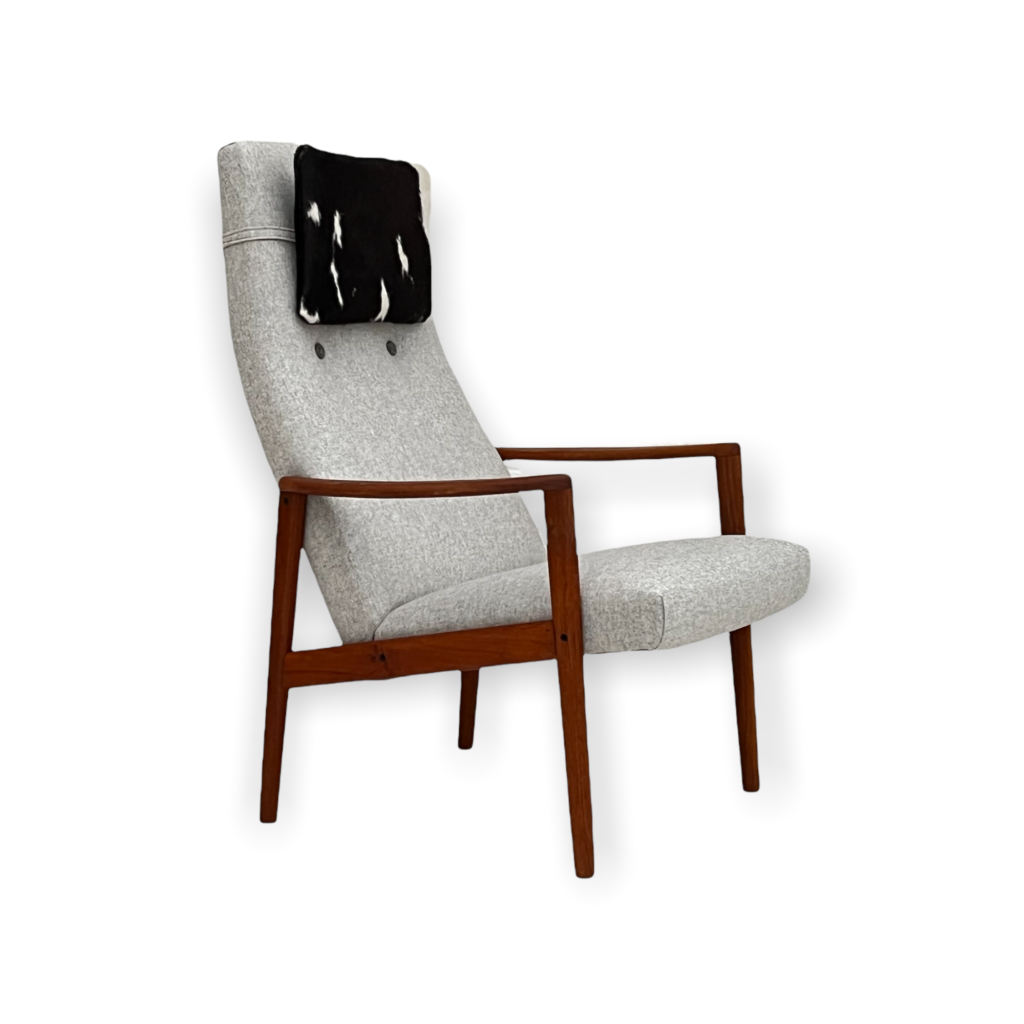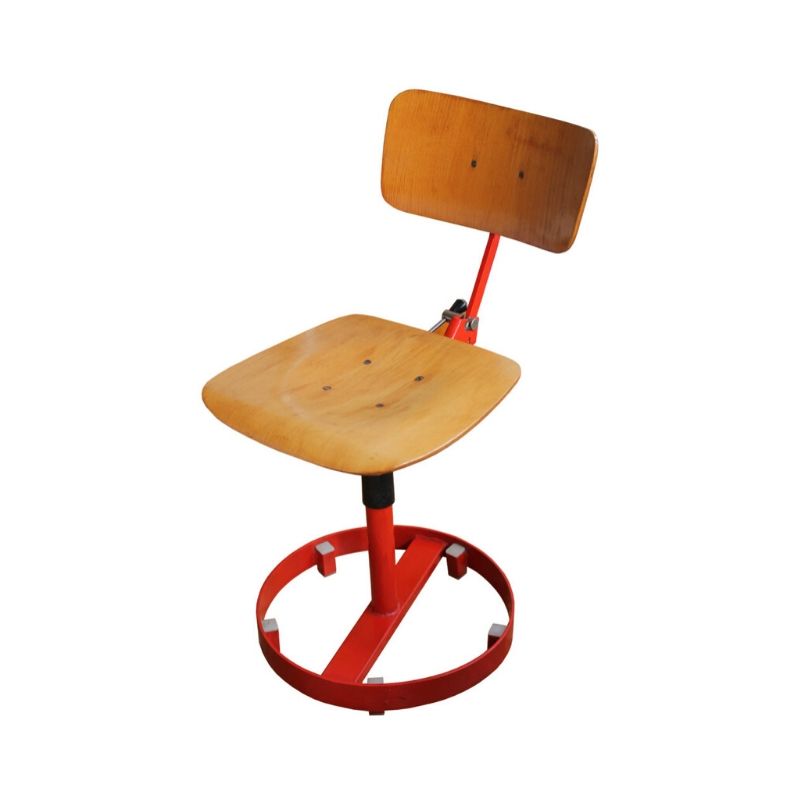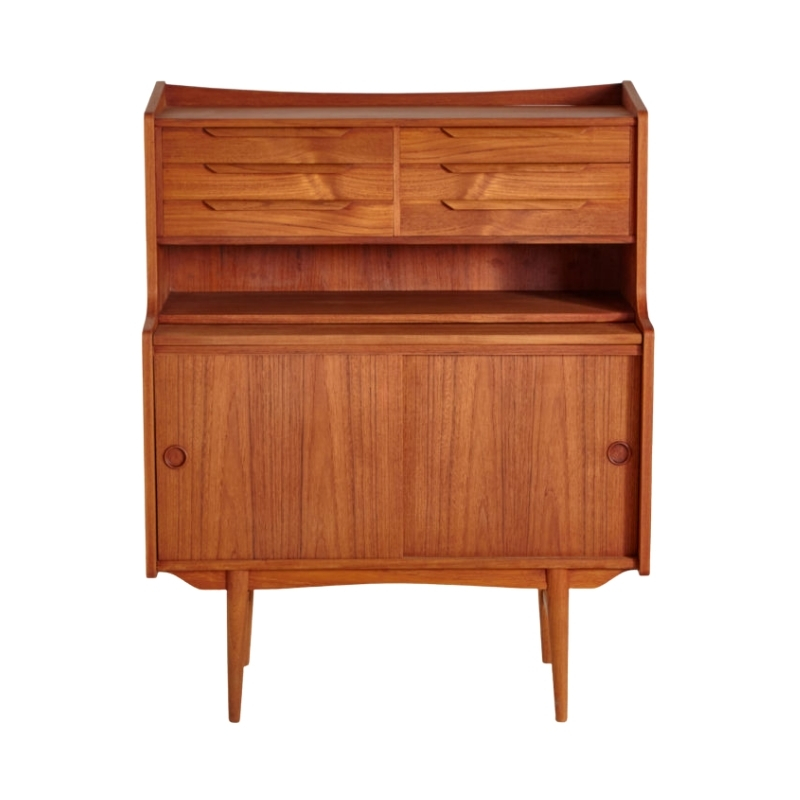I am reproducing a 6' Jens Risom curved top upholstered bench seat frame. It was originally a coffee table that had the top irreversably destroyed in a prior restoration. The base is the same for both table and bench so I am giong to make it a bench. I have plans I took from another bench I have and am in the process of making the parts.My question is about joinery. All joints appear to be simple butt joints. I am planning to dowel the parts together. The components are either 2" or 3" wide and 1" thick and every joint is end grain to face grain. Is it better to use more smaller diameter dowels or fewer larger ones? Also, I have only seen dowel joints in a single row but have the thickness to do double rows. My idea is that a double or staggered row would prevent rocking of the joint. Opinions? Thanks
Is it one of these? And you are making the frame for underneath the upholstery?
More and smaller pegs is generally the strongest joint. Usually one sees fewer and larger pegs because it is easier.
As a frame under upholstery, I wouldn't be surprised if the original were banged together with nails. Or a piece of curved plywood.
I would agree with that. I like the concept of improved joint stability via staggered or doubled dowels -- but that may be over-thinking it, unless smaller-diameter dowels appeal to you for some reason. The challenge with any non-production doweling is repeatablility of the hole pattern, of course.
As to dowel length, the difference in effective glue surface between grain-direction dowels and cross-grain ones leads me to suggest that the cross-grain holes be drilled 50 to 100 percent deeper than the in-line ones -- but that's just me being . . . me.
If you wanted to introduce novelty to this unseen (?) frame, you could substitute half-lap or even bridle joinery at the corners of your frame -- if the technology better matched your resources.
Best wishes with your project !
Well, that certainly explains why I can feel the internal cross supports when sitting on certain parts of the bench. Even with the ample padding, replacing the webbing with a piece of curved 1/4" ply would have provided a more consistent feel to the seat. Risom used plywood support for both the seat cushion of the C-140 "Playboy" chair, as well as the support under the seat cushion for the U-430 Caribe Hilton lounge chair, so it's not as if he had an aversion to using it.
That is why I was speculating that a piece of bent plywood might have been the "original" foundation for this bench. (Until, I realized that glassartist was saying he had already dissected one and knew what it looked like).
It would certainly have provided a more uniform foundation for sitting. The jute webbing is supposed to do that, but it isn't exactly uncommon knowledge that it stretches eventually.
A couple of thoughts:
First, I see no advantage of oak over any other hardwood for the frame. I'd probably use poplar to save on cost, but just about anything on hand would work here.
Second, potential problems with dowel pins. The more pins in each joint, the more long-grain glue surface area, and the stronger the joint. But... the more critical and tricky alignment becomes. I think two per joint here should be adequate. Pin diameter half the thickness of the frame members spaced approximately half the width of the joint apart is close to ideal. For instance, if the joint is 1" thick by 3" wide, 1/2" diameter pins spaced 1 1/2" apart on center should be good.
The more critical joints on your frame are on the ends. Go at least an inch deep (min. 2'' pins) on those. The stretchers are less critical, but if you're already set up to drill 1 1/8" deep holes, might as well stick with that.
I like the dowel pins with grooves running the length of the pins rather than the spiral-grooved ones, but, whichever you choose, make sure the ends are chamfered and test-fit every one of them during your dry-fit just to make sure you don't run into problems. Purpose-made dowel pins are usually kiln-dried and tend to start to expand as soon as they are wetted with glue. If they're tight, you can pre-compress them a little by driving them through a hole drilled in a scrap of something hard.
Be sure your holes are 1/8" deeper (1/4" total) than than the length of the pins to allow room for excess glue and prevent possibility of bottoming out. Lay out all your clamps, etc., plan your glue-up during dry-fitting, and consider using liquid hide glue for longer open working time or the Titebond formulated to provide such.
Looks like a fun project. Can't wait to see the results! Best of luck!
Apologies if this is a dumb question, as I am not really a wood guy. How are you planning on making the curved cross members? They appear to be from a single piece of wood in the original bench. Are you buying a 4x4, then cut the curve out on a band saw? I am under the impression that wood that thick does not get steam bent.
No -- wood that thick must be cut to shape. The question would be whether the factory would leave them with band-sawn texture or would shape them with a template. Poplar would belt-sand more easily than oak. I once made a shoe for the side sander, placed behind the graphite cloth, to create a convex surface for sanding the concave parts of some table legs. Worked a treat, as they say . . .
My comment on tktoo's exhaustive instruction would be to ask if the method for compressng the diameter of the pins wouldn't permanently reduce them, by scraping off some material. I guess a thick piece of steel with a tapered (conical) hole would do the trick ? Another means is to pound them with a hammer on the concrete floor -- some fools I worked with showed me you can do this with biscuits that are too thick. It works !
(Conversely, my current batch of biscuits are a bit thin, and I have to sprinkle them with water and let them dry, before use.)
Perhaps the best method for dry-fitting the frame would be to prepare a batch of sacrificial pins identical to the ones intended for use, reduced enough indiameter for an easy fit and discarded afterward ?
The note about diameter of pin relative to thickness of stock is useful -- but you're not advising 1" diameter dowels for 2" stock, surely ? As for length, 1" penetration is common as are 2" pins, but I'd be much more comfortable if they made 3" ones ! (Who knew a liberal would turn so conservative in his old age ?)
If you need any help, please contact us at – info@designaddict.com









